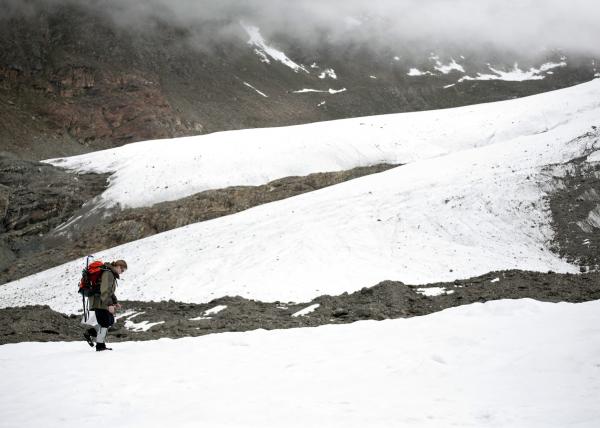Glaciers expand as Asia heats up
Normally when the temperature rises, the ice will melt away.
That is why a collection of glaciers in the southeast Himalayas 9,000 years ago has puzzled many scientists. While most glaciers in Central Asia gradually recede under hotter summer temperatures, these glaciers expand from 1 to 6 kilometers.
A new geologist study BYU Summer Rupper has connected a series of events around this sudden expansion of glaciers.
'The stronger monsoon is thought to be the cause of this phenomenon. Our research shows that heavy snowfall from the monsoon impact is only the cause of 30% of the glacier expansion , "Rupper said. She published her findings in the September issue of Quanternary Research.
When the summer climate in Central Asia warms about 6 degrees Celsius, the changing weather cycle has drawn more clouds to the Southeast Himalayas. The shadow of the clouds created a mass of air with colder temperatures.
Temperature also decreases when high winds push more steam into this already wet area.
 Professor BYU Summer Rupper is studying the field in the glacier of Goernergrat in Switzerland. Her latest research shows that a group of Himalayan glaciers has grown more despite a significant increase in temperature. (Photo: Brigham Young University)
Professor BYU Summer Rupper is studying the field in the glacier of Goernergrat in Switzerland. Her latest research shows that a group of Himalayan glaciers has grown more despite a significant increase in temperature. (Photo: Brigham Young University)
The story of this glacier cluster emphasizes the important difference between 'climate change' and 'global warming'.
Rupper said: 'Even if the average temperature is increasing in the region or globally, what happens in a certain location depends on the characteristics of the area.'
These findings are based on the basis that Rupper developed to replace the notion that glaciers melt when temperatures are high. Her method is based on the energy balance between glaciers and a variety of climatic factors, including wind, humidity, rain, steam, and clouds.
Gerald Roe and Alan Gillespie of Washington University are co-authors of the new study. Understanding the reaction of glaciers in the past to climate change will help Rupper predict the region's water supply in the coming decades. She and her colleagues are in the process of determining the amount of water in the Indus River coming from a network of large glaciers in the agricultural valley of India and Pakistan.
'Their research could be used to help assess glacial and hydrological changes in Earth's most populated region. The area has begun to feel the obvious impact of man-made climate change, 'said Lewis Owen, a geologist at the University of Cincinnati.
Refer:
Summer Rupper, Gerard Roe, Alan Gillespie.Spatial patterns of Holocene glacier advance and retreat in Central Asia.Quaternary Research, 2009;DOI: 10.1016 / j.yqres.2009.03.007
- Glaciers in Asia are unusually bloated
- The Andes glaciers narrowed the record
- Warning of glaciers in Peru is likely to disappear
- Glaciers on Mount Mont Blanc are at risk of collapse
- 20% of Canadian glaciers disappeared in this century
- Oracle announces strategy to expand market leadership
- Himalayas glaciers have been flawed for the past 40 years
- The world's fastest melting glaciers through satellite images 30 years apart
- The first glacier in the world officially 'died' in the era of climate change
- The discovery of glaciers is melting under the layer of dust on the surface of Mars
- Mexico will not have glaciers?
- The world's most dangerous glacier is about to melt, catastrophic with Earth?
 'Fine laughs' - Scary and painful torture in ancient times
'Fine laughs' - Scary and painful torture in ancient times The sequence of numbers 142857 of the Egyptian pyramids is known as the strangest number in the world - Why?
The sequence of numbers 142857 of the Egyptian pyramids is known as the strangest number in the world - Why? History of the iron
History of the iron What is alum?
What is alum?